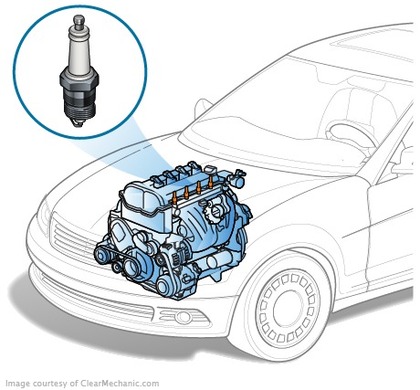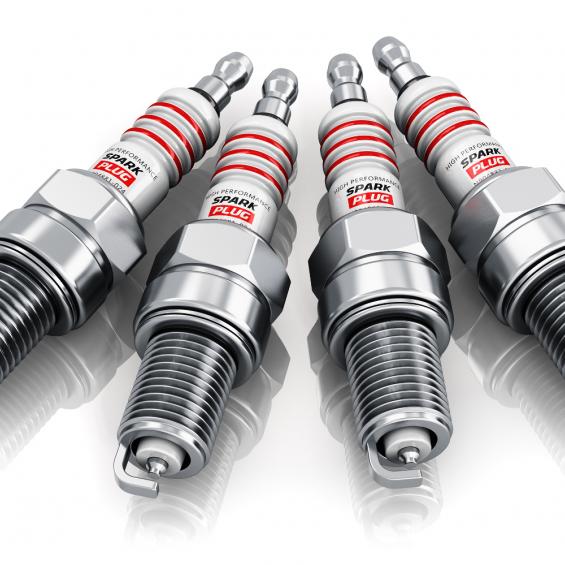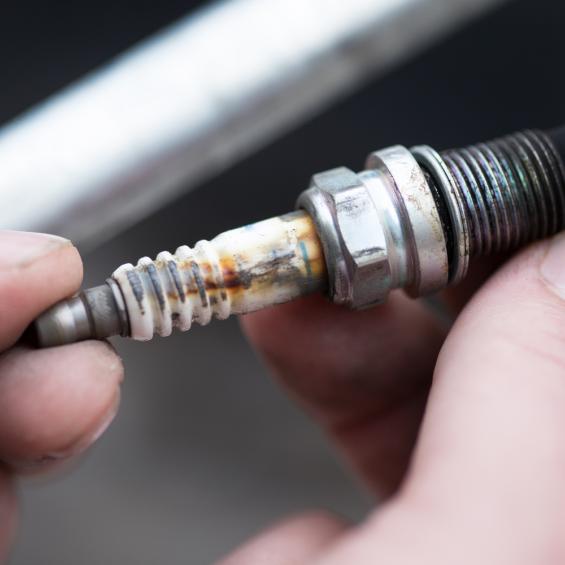
Spark plugs are part of the ignition system, device that fuels the air mixture in the combustion chamber of the internal combustion engine. Ignition of the spark plugs
Ignition of the spark plugs
Spark plugs appeared a little earlier than the middle of the last century and were patented in 1860 by Frenchman Jean Lenoir. Modern candles are unlike Lenoir candles, but their main function remained the same.

Ignition spark plugs
The main components of any spark plug are metal casing, electrodes, ceramic insulators and contact rod. The shell is equipped with carvings which are placed in a special hole in the cylinder block, the so-called " candle well. The candle is fitted with a hexagon similar to the standard key, and the body is covered with a dusty nickel for protection against corrosion.
By thermal performance, spark plugs are divided into hot, medium and cold. Each engine type requires a strictly appropriate candle. Among the main mechanical characteristics of the spark plugs are the type of threads, the length of the threads and the size of the head under the key.

The modern spark plug is capable of absorbating 20 million sparks. This means that during normal driving, the spark plug is reliable at distances of up to 15,000 km, and the fatigue of the product may be further developed. Because of this, many Western firms are advised to replace the candles in 15000-20, 000 km of car mileage. The Russian spark plugs are often longer, adjusted for candlelight increasing as the electrodes are burned. But it is worth knowing that, with the increased load of the engine, the product will be exposed to overheating and the ignition of the engine, which may be dangerous for the engine.

Prevalence of spark plugs in use
Spark plugs shall withstand high heat, chemical and mechanical loads. However, there are defects in the process that gradually result in the failure of the candle.
1. The candles are sediments due to mechanical deterioration of the engine. The attachments contribute to the introduction of the potash which may cause damage to the engine.
2. As a result of the constant high temperature, the ceramic unit is gradually destroyed.
3. The candles can be fused in the event of an abnormal increase in the temperature of combustion of the fuel mix.
4. The properties of the candle may decrease as a result of the accumulation of soot in the insulator and electrodes.
Some of these malfunctions can be removed by cleaning out the candles with a metal thief, and in the case of mechanical damage and melting, the candles should be replaced.

How to distinguish the original candle from a fake
Ignition spark plugs are too low, selling under a known brand-a sign of counterfeit products. The low price can only be in non-original parts, and the low price can be very low-in outright knockoff.
When you purchase, you should pay attention to the packaging. As a general rule, the manufacturer's site can find a sample package with explanations. In addition, the packaging of candles from a famous producer should be of high quality, and the printing house is uncordained. There may be errors and offsets on the packaging of the counterfeit product.
Central electrode.
If the central electrode does not have a distinct cylindrical form, it is established that there are visible defects-it is a forgery.
The carving.
The fake spark plugs on the carving are small.
Code.
A code containing the batch number has been printed on one of the original candles on one of the edges of the hexagon. Such a signature does not have such a mark.
If you purchase candles on the market, be careful. Read the feedback on the spark plugs. Remember that the poor quality of the spark plugs often leads to serious breakdowns in the engine.







